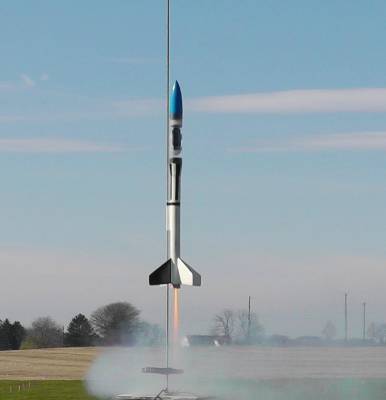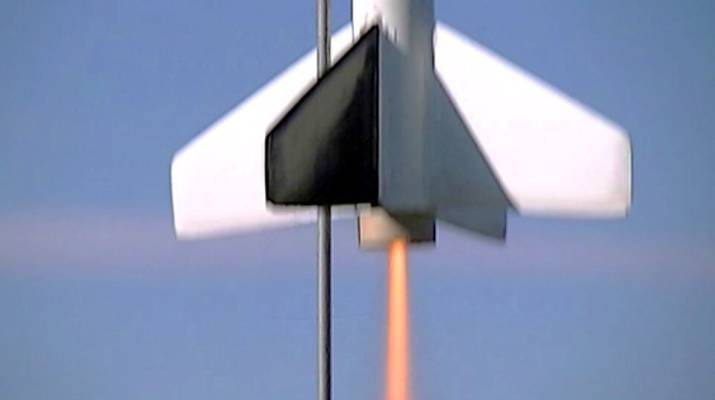The X-Ray: Nice little payload rocket, using a tape-friction-fit motor mount. Not at all like the modern Estes X-Ray kit. This has a balsa nosecone, transition and fins. It is a very light model. This ol' girl sure made a lot of flights and she's showing her age. In the early days this was my tallest and most impressive rocket for the first year or two, so I would really like to get her flying again and see how high it can go, I imagine close to 1000 feet. To restore this model, I need to find a clear BT-50 payload tube since the old one is cracked. I don't recall it cracking during a flight, it most likely occurred while in storage.
Recent update: Finally found a clear tube of the right diameter: Stole it out of a new Estes Magician kit a bought for parts. Expect the X-Ray to shine again!
The X-Ray has now been restored and is flying again. I found the same clear tube length and diameter from Estes - but I had to spring for a full Magician kit to get it! I gave it a new Kevlar shock cord mount and some new rubber, reinforced the screw-eye to the balsa transition (which to my suprise was never glued in originally!). It also received a new 9.3" plastic parachute with longer shroud lines and a good hard cleaning. Its first new flight with an A8 motor brought it up to 216 feet at 76 mph (111.5 ft/sec.). There will be more flights with this for sure.
| Flight Date: | 2012-11-23 |
| Rocket Name: | X-Ray |
| Kit Name: | Estes - X-Ray {Kit} (18) [1965-1985] |
| Flyer's Name: | Rich DeAngelis |
| Motors: | A8-3 |
| Expected Altitude: | 180 Feet |
| Wind Speed: | 6.00 mph |
| Launch Site: | Penn Manor School Lancaster PA |
| Actual Altitude: | 216 Feet |
The X-Ray was restored after a 35 or more year rest, and was ready to fly again. Though the air was very still this morning, it began picking up so I had to fly only lower flights and fast rockets from this point on. At just about 1 oz. weight, this rocket is light, and with a quick A8 motor I expected it to fly just fine.
The A8 motor lit and the rocket shot to the sky fairly quickly and straight, peak acceleration was 21.9 Gs (it can only measure to 23 Gs). The short burn of the motor was done in ½ second, averaging 7.7 Gs during that time, allowing this classic rocket to reach a maximum speed of 76 mph. It then coasted for 2.7 seconds and reached apogee, 216 feet above ground. I was pleased it was able to resist the growing breeze.
Ejection occurred at 208 feet, and it must have been pretty soft because the Altimeter 2 did not detect the ejection. The tiny yellow plastic parachute opened, bringing the rocket back at 8 mph. After 24.2 seconds it was on the ground, about 300 feet downwind. This was in every way a successful flight, the first time in 35 years or so. Since there was only this single flight so far, every reading is a “new record”.
| Stage | Motor(s) |
|---|---|
| 1 | Estes A8-3 |
 |
 |

